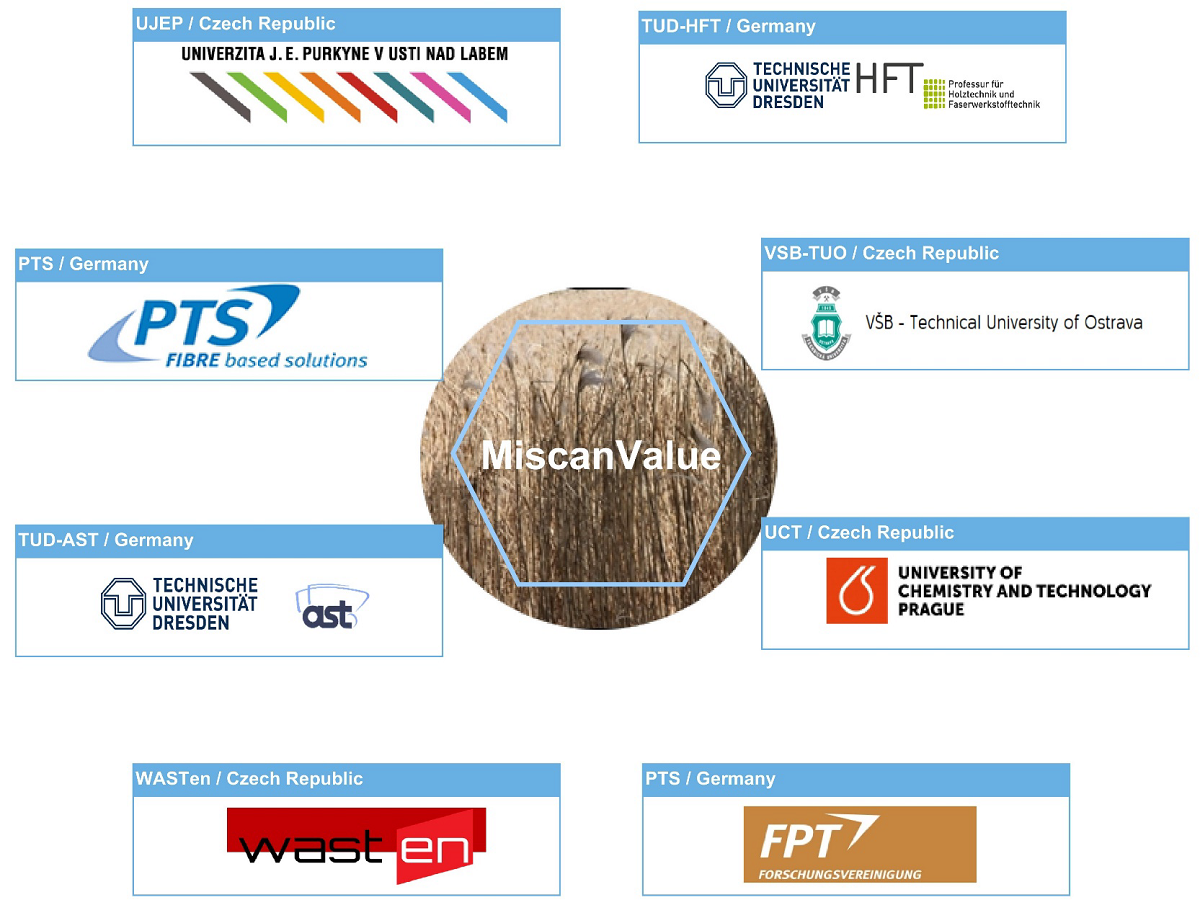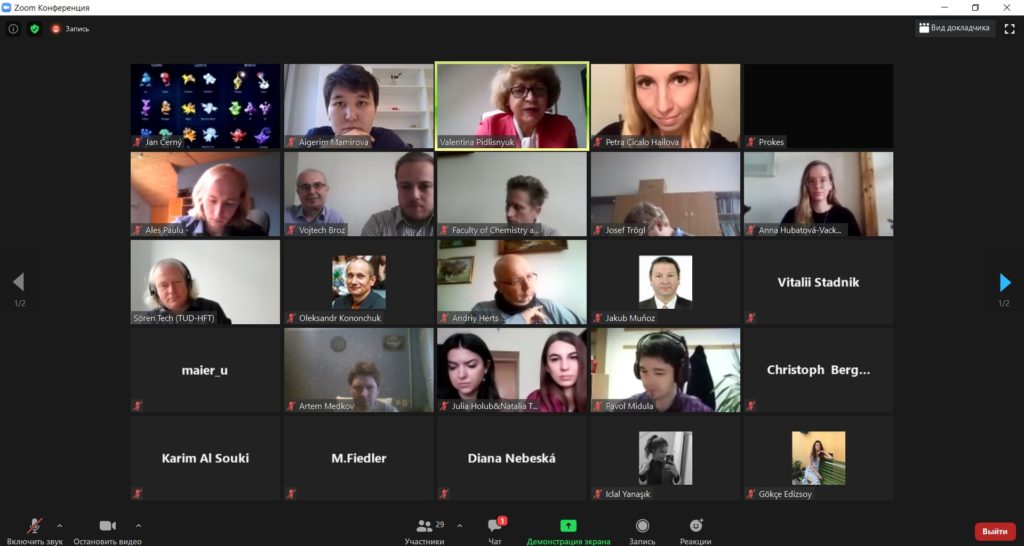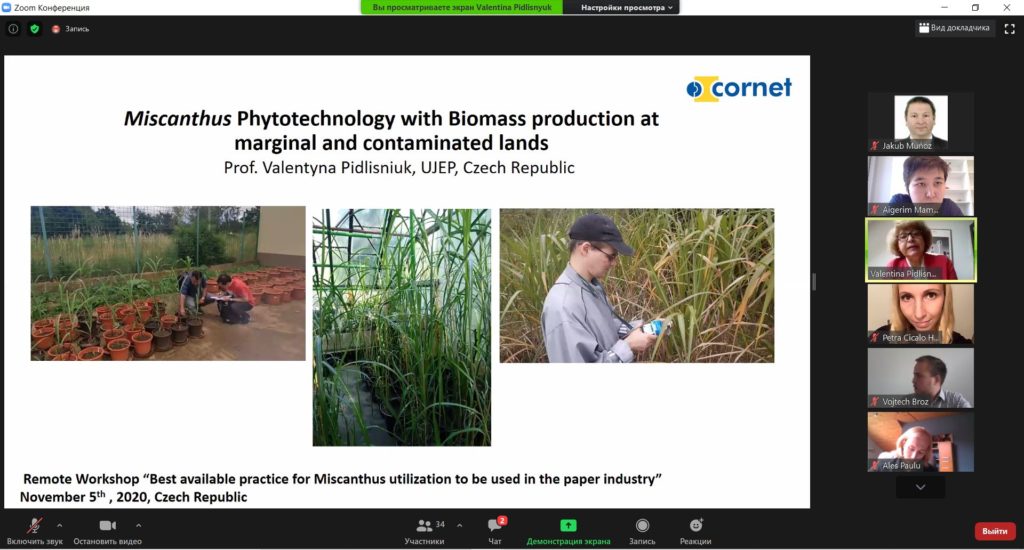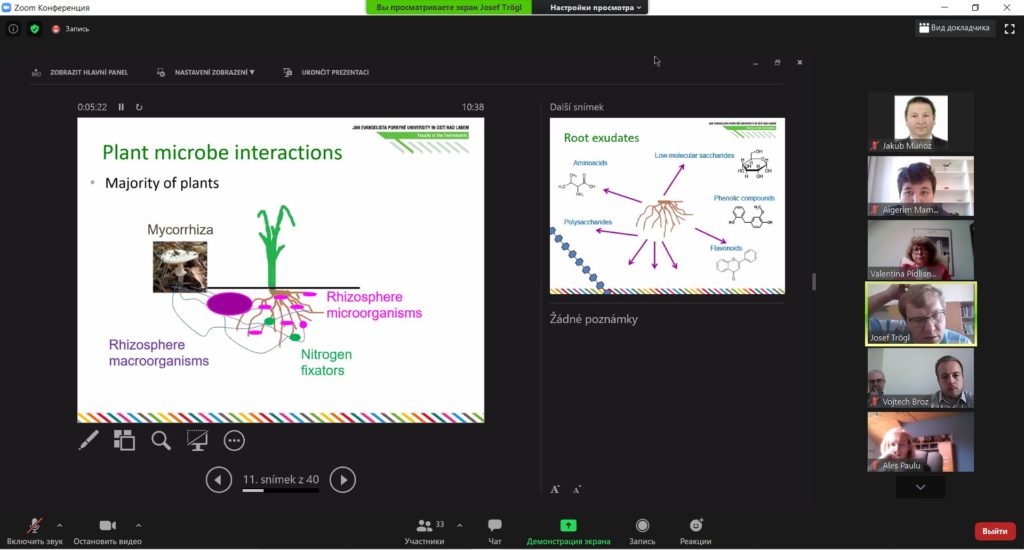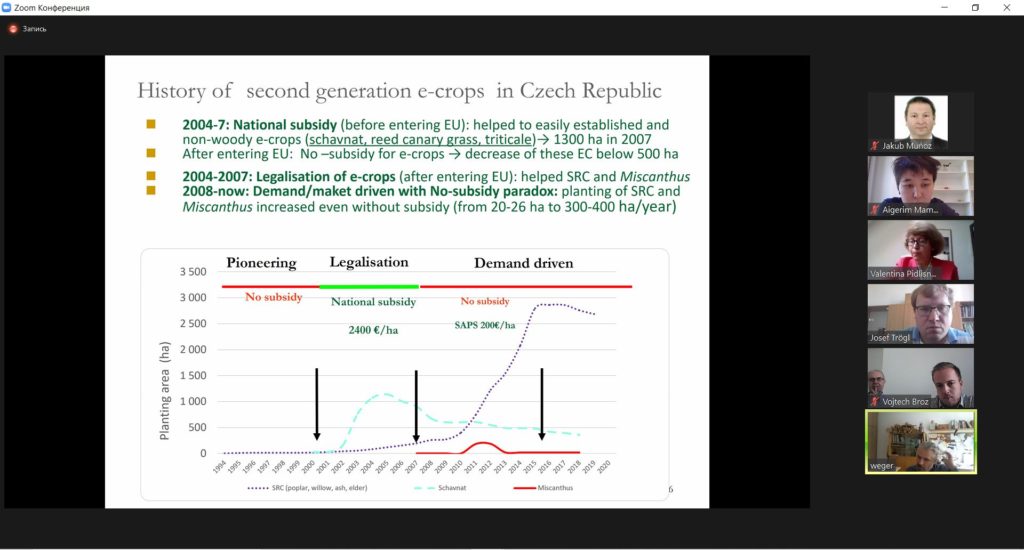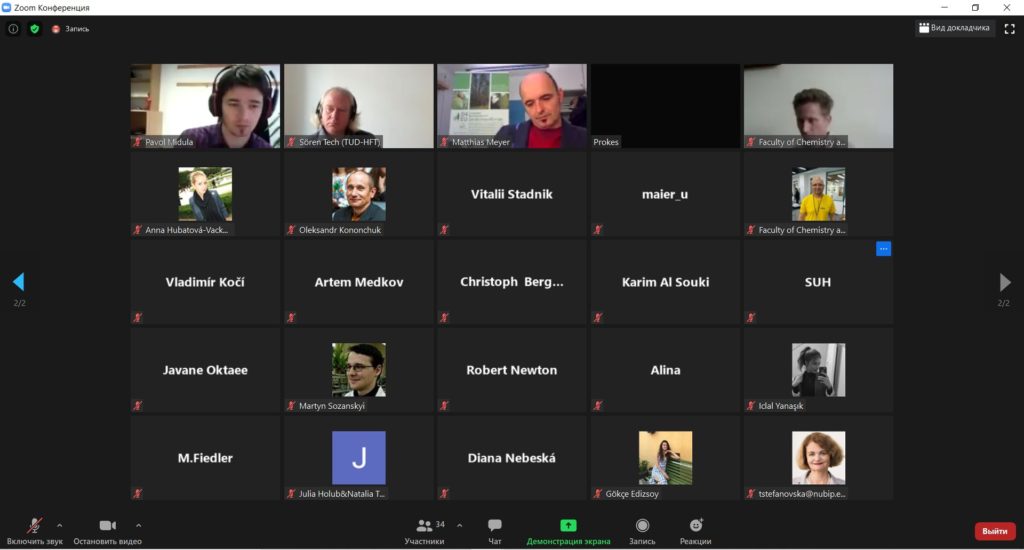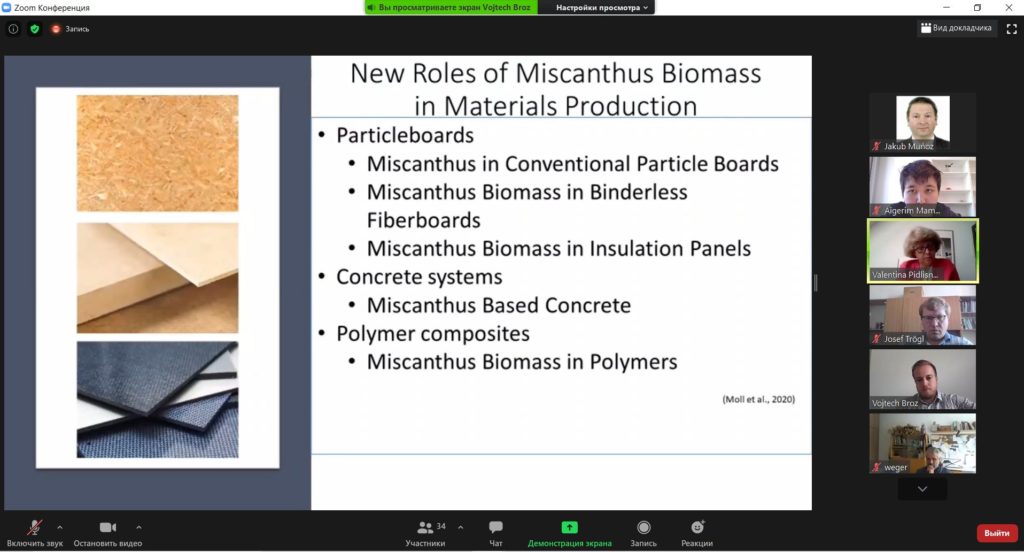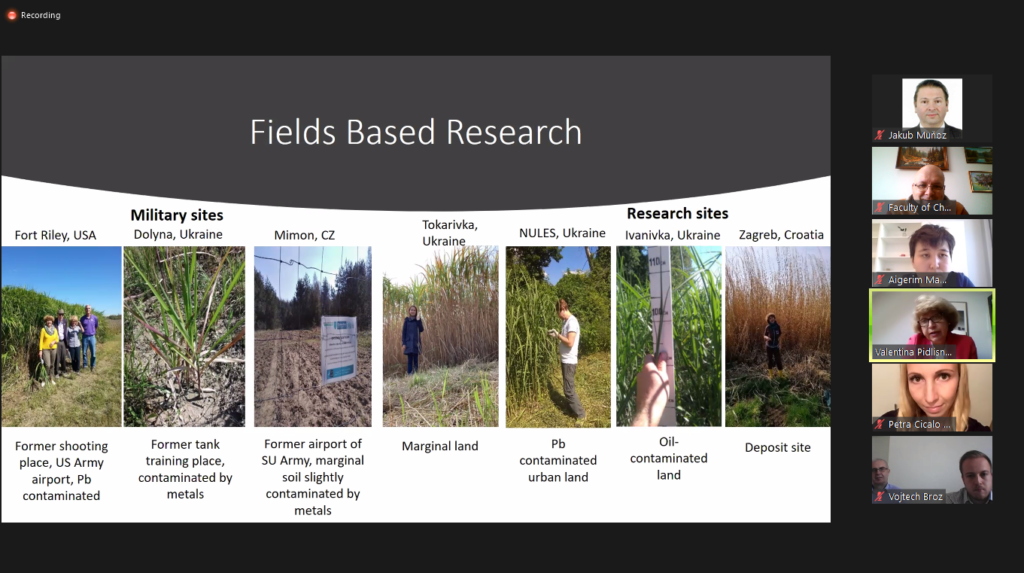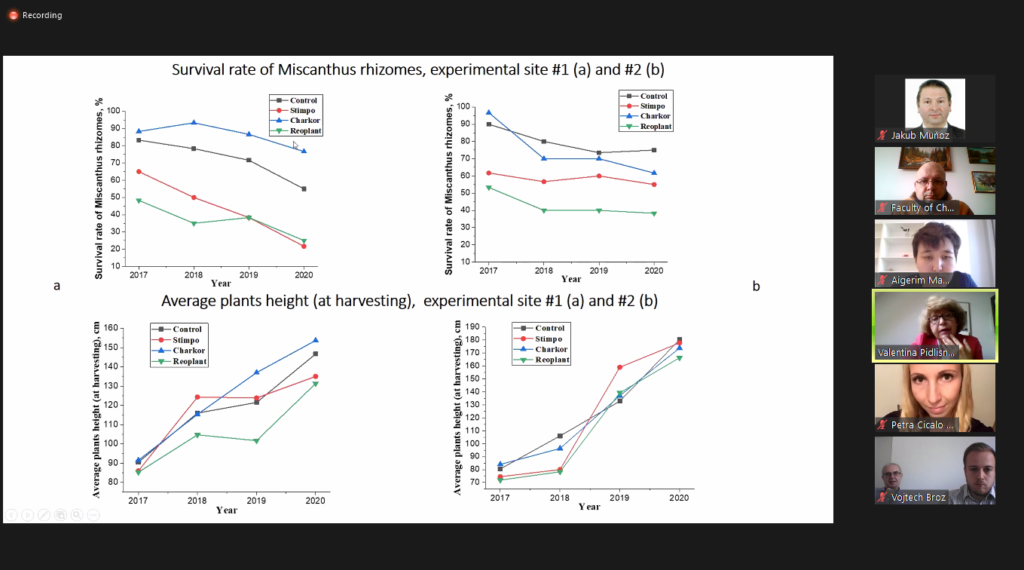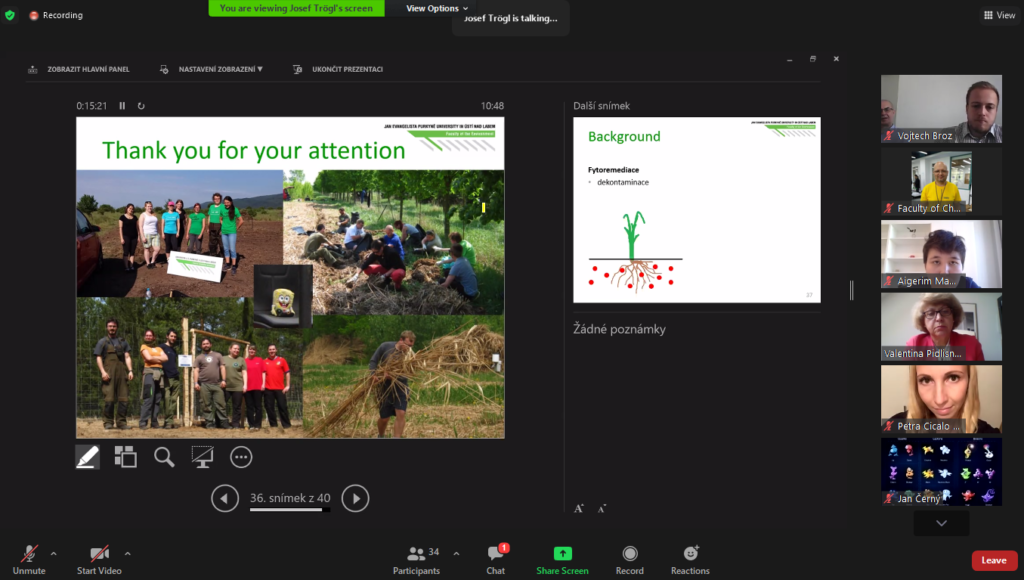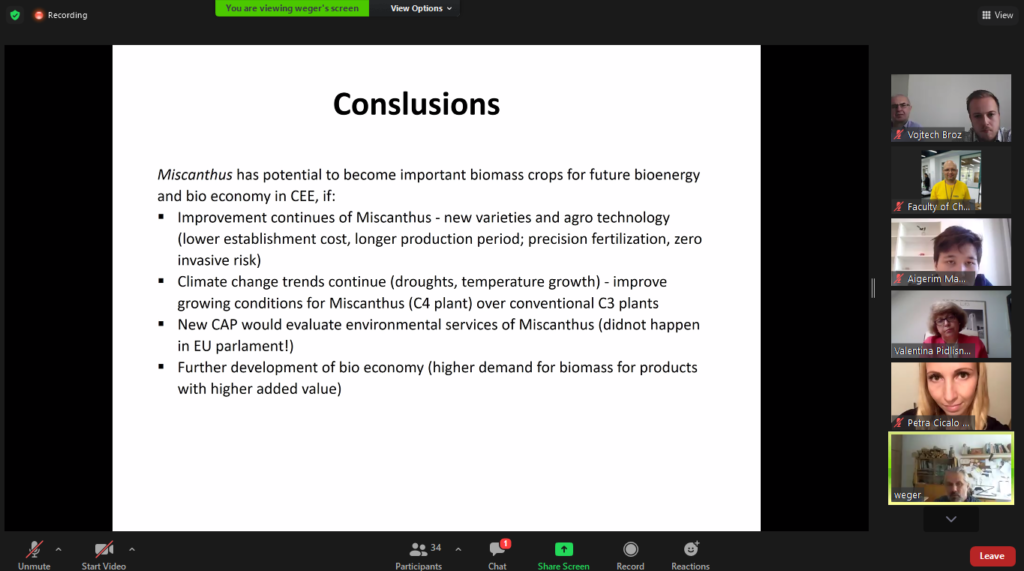Event is supported by German-Czech project CORNET MiscanValue,
and provided in cooperation with NATO SPS MYP G4687 “New phytotechnology for miscanthus biomass production”.
Outcome of the event is available here:
Outcome of the Remote workshop “Best available practice for miscanthus utilization to be used in the paper industry” (November 5, 2020)
The remote workshop “Best available practice for Miscanthus utilization to be used in the paper industry” was held on 5th of November, 2020 in the framework of project “Creating value chains for utilization of miscanthus fibres from sustainably managed marginal and post-mining areas“ (MiscanValue) in cooperation with NATO SPS MYP G4687 “New phytotechnology for miscanthus biomass production”. The workshop aimed to exchange experience in the cultivation of miscanthus for phytoremediation of the contaminated and marginal lands with subsequent processing of biomass to bioproducts. 36 professionals, end-users and scientists from the Czech Republic, Germany, Ukraine, Slovakia attended the event provided at online platform Zoom. The participants received a link to Guide Book which covered the following topics: 1) Miscanthus spp. botanical characteristics; 2) Production of Miscanthus; 3) Miscanthus phytotechnology 4) Miscanthus biomass processing to bioproducts.
The first speaker Dr. Jakub Muňoz from the Crop Research Institute, Chomutov, Czech Republic provided general information about energy crops production in the Czech Republic with an emphasis on Miscanthus. Dr. Jan Weger from The Silva Tarouca Research Institute for Landscape and Ornamental Gardening, Pruhonice, Czech Republic shared the practice of Miscanthus production during 15 years. Prof. Valentina Pidlisnyuk from the Department of the Environmental Chemistry and Technology, Jan Evangelista Purkyně University, Usti nad Labem introduced experience related to Miscanthus potential to phytoremediate the lands contaminated by heavy metals. Dr. Josef Trogl from the Department of the Environmental Chemistry and Technology, Jan Evangelista Purkyně University, Usti nad Labem revealed the phytoremediation process from the point of changes in soil quality occurring during the phytoremediation process. Mr. Ethan Duong from HTW-Dresden, Germany made a report about processing of Miscanthus biomass to fiberboards and pulp. In the discussion followed workshop’s participants shared their experience related to the main workshop’s topics.
Main speakers and contacts:
- Prof. Valentina Pidlisnyuk, Dr.Sc. (valentyna.pidlisniuk@ujep.cz, pidlisnyuk@gmail.com)
- Doc. Ing. Josef Trögl, Ph.D. (josef.trogl@ujep.cz)
- Ing. Jan Weger, Ph.D. (weger@vukoz.cz)
- Ing. Jakub Muňoz, Ph.D. (munoz@eto.vurv.cz)
The workshop was accomplished with support of Cluster WASTen, Czech Republic.
Date: November 5, 2020
Form: Zoom platform, WASTen, Czech Republic
Language: English
Contacts: Vojtěch Brož, WASTen, Czech Republic: info@euroforumgroup.cz
